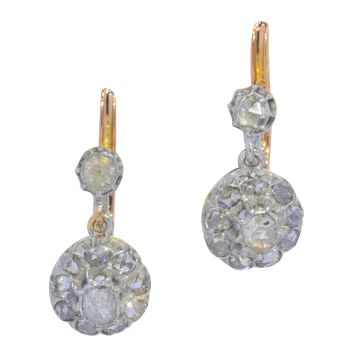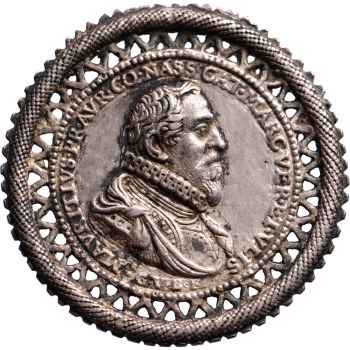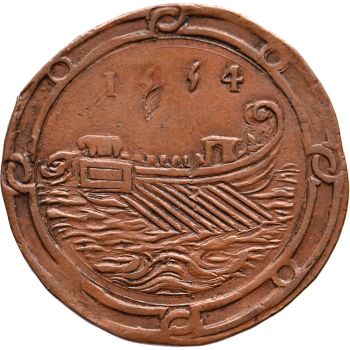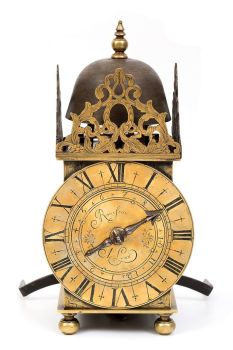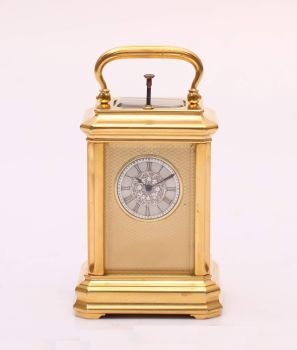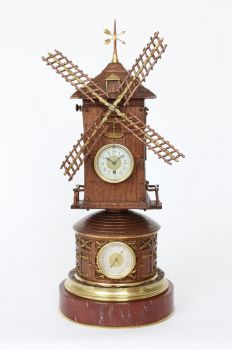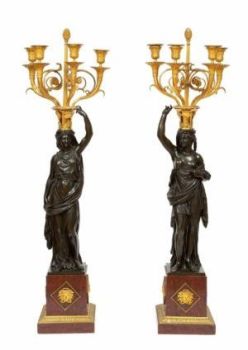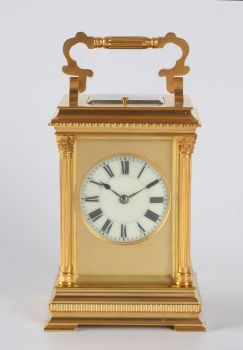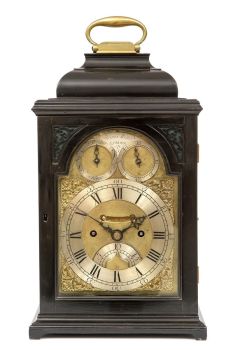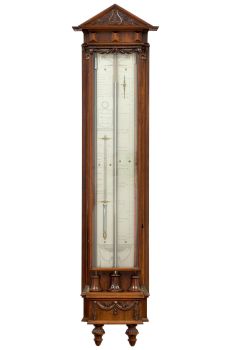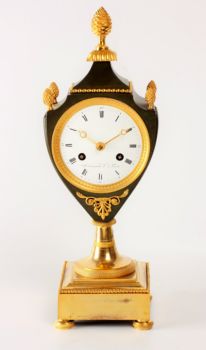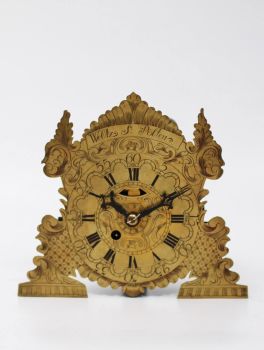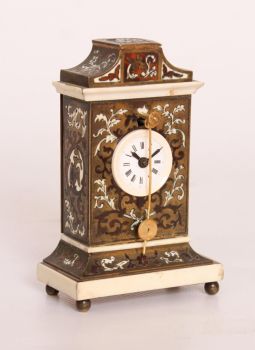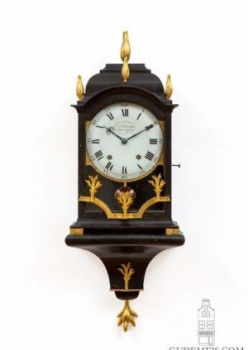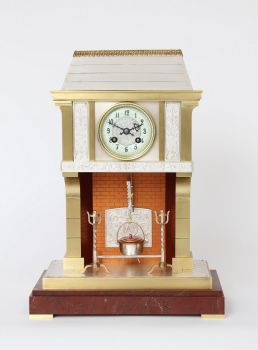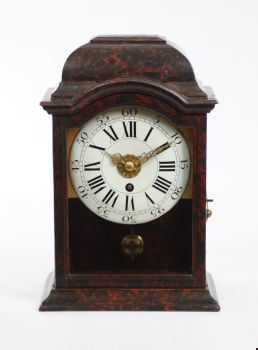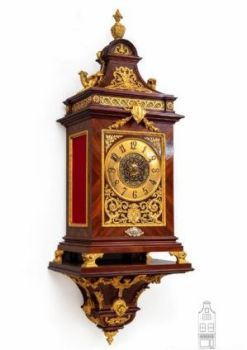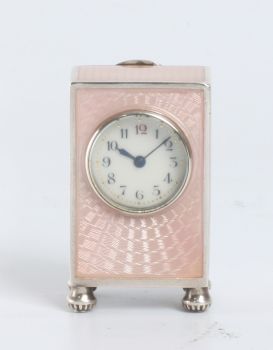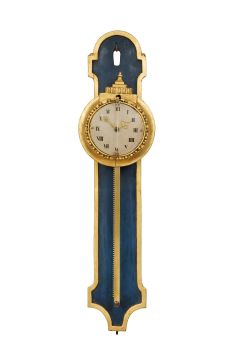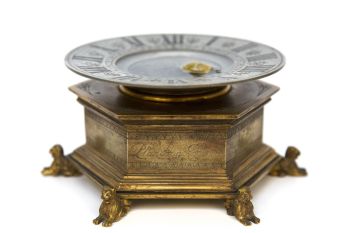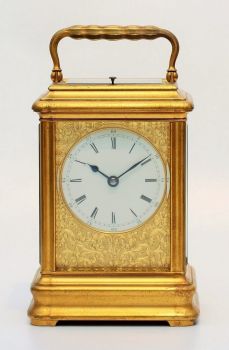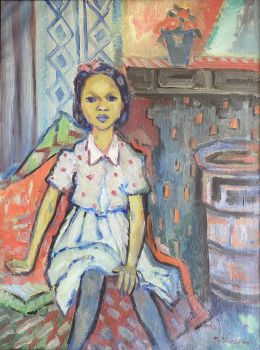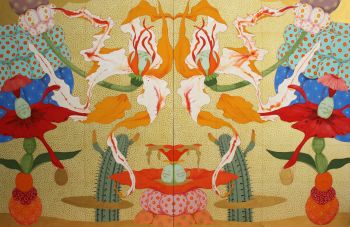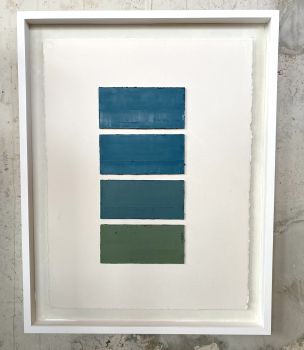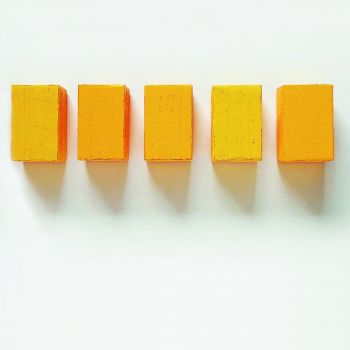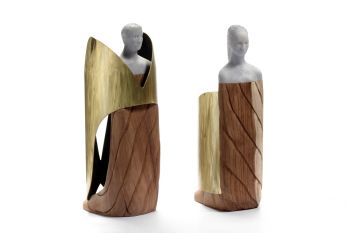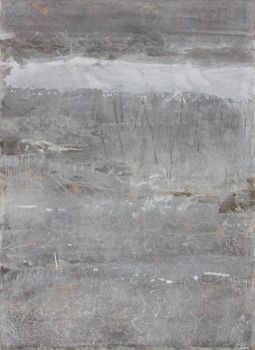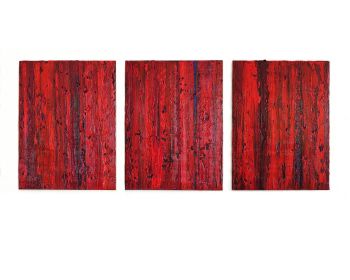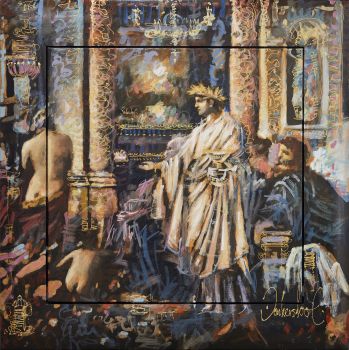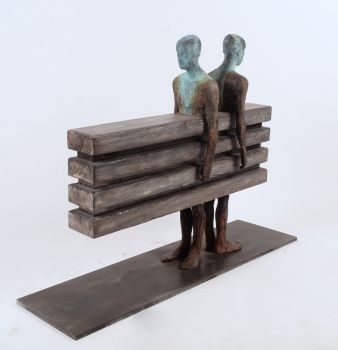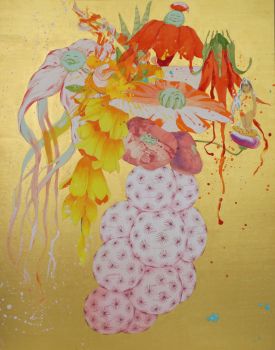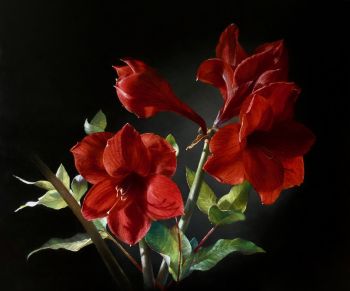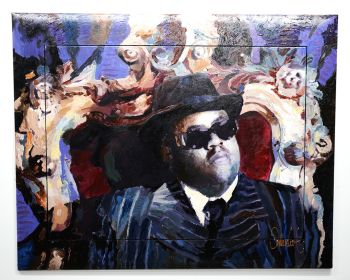A Surinam-themed Amsterdam long-case clock 1746 - 1756
Artista Desconhecido
Madeira
259 ⨯ 60 ⨯ 35 cm
Preço em pedido
Zebregs & Röell - Fine Art - Antiques
- Sobre arte
The Netherlands, 1746-1756, dial signed Nicolaas Weylandt/Amsterdam The case of the clock is made of Rio palissander veneer and snakewood, with the arch showing a painted scene of the harbour of Paramaribo, Fort Zeelandia and Dutch ships in anchorage, the spandrels decorated with figural representations of the four continents, the centre of the dial painted with Mercury, the god of trade, seated on a bale signed VCS (Vereenigde Compagnie Suriname), and one of the barrels bearing the initials “RBS,” on the left the river god of the Surinam river, with a Dutch three-master in the background. H. 259 x W. 60 x D. 35 cm (case) Diam. 32 cm (clock dial) This exceptionally rare long-case clock probably was ordered by one of the many wealthy families living along the Amsterdam canals that owned or had shares in plantations in Surinam. It’s a successful marriage of the work of an accomplished 18th century Amsterdam clockmaker, a Dutch cabinetmaker working with exotic tropical timbers, a woodcarver familiar with both Dutch rococo design and Surinamese iconography, and a painter with knowledge, whether first-hand or through other visualisations, of the Paramaribo waterfront. In the production of this Gesamtkunstwerk, only the name of the clockmaker is known: Nicloaas Weylandt (c. 1700 - 1754), who had a business situated on the Nieuwendijk near the Haarlemmersluis in Amsterdam from 1742 until his death. The case is made of imported timbers from Surinam; Rio-palissander and snakewood. A very similar clock-case, veneered in walnut, is illustrated in J. Zeeman, De Nederlandse staande klok, Zwolle, 1996, and dated c. 1740. That clock is also by Weylandt, so the case most likely also is by the same cabinetmaker working for Weylandt. Zeeman points out that 18th-century Dutch clockmakers relied extensively on imported clock parts, like the clock face, the various dials and clock hands, mainly from Britain. Besides, Amsterdam clockmakers outsourced the cabinetmaking, carving and painting to independent artisans. The Surinam character of the clock is evident not only in the timbers used, nor in the painted view of Paramaribo in the clock arch, but also very specific in the depiction of the parrots in the carved rococo centre block in the arch and the smaller carving in the door. Weylandt’s clock has a 7-day twin-barrel anchor movement, with a bell-strike on the hour and half-hour. It is fitted with a second dial, day aperture and alarm setting disk. Exhibited: De Grote Suriname Tentoonstelling, Nieuwe Kerk, Amsterdam, 5 October 2019 - 2 February 2020.
- Sobre artista
Pode acontecer que um artista ou criador seja desconhecido.
Algumas obras não devem ser determinadas por quem são feitas ou são feitas por (um grupo de) artesãos. Exemplos são estátuas dos tempos antigos, móveis, espelhos ou assinaturas que não são claras ou legíveis, mas também algumas obras não são assinadas.
Além disso, você pode encontrar a seguinte descrição:
•"Atribuído a …." Na opinião deles, provavelmente uma obra do artista, pelo menos em parte
• “Estúdio de…” ou “Oficina de” Em sua opinião um trabalho executado no estúdio ou oficina do artista, possivelmente sob sua supervisão
• "Círculo de ..." Na opinião deles, uma obra da época do artista mostrando sua influência, intimamente associada ao artista, mas não necessariamente seu aluno
•“Estilo de…” ou “Seguidor de…” Na opinião deles, um trabalho executado no estilo do artista, mas não necessariamente por um aluno; pode ser contemporâneo ou quase contemporâneo
• "Maneira de ..." Na opinião deles, uma obra no estilo do artista, mas de data posterior
•"Depois …." Na opinião deles uma cópia (de qualquer data) de uma obra do artista
• “Assinado…”, “Datado…” ou “Inscrito” Na opinião deles, a obra foi assinada/datada/inscrita pelo artista. A adição de um ponto de interrogação indica um elemento de dúvida
• "Com assinatura ….”, “Com data ….”, “Com inscrição ….” ou “Tem assinatura/data/inscrição” na opinião deles a assinatura/data/inscrição foi adicionada por outra pessoa que não o artista
Você está interessado em comprar esta obra de arte?
Artwork details
Related artworks
Artista Desconhecido
Japanese transition-style lacquer coffer 1640 - 1650
Preço em pedidoZebregs & Röell - Fine Art - Antiques
1 - 4 / 12Artista Desconhecido
Een Gotische zuidelijke Nederlanden wandklok1580 - 1590
Preço em pedidoNico van den Assem restauratie
 Com curadoria de
Com curadoria deDanny Bree
Artista Desconhecido
A pair of angels Antwerp, 17th century, Carrara marble17th century
Preço em pedidoFrederik Muller
1 - 4 / 24Artista Desconhecido
Een Gotische zuidelijke Nederlanden wandklok1580 - 1590
Preço em pedidoNico van den Assem restauratie
Artista Desconhecido
Set Franse Empire Pendules / Empire Lectura penduleearly 19th
Preço em pedidoKuipers Kunst & Antiek
1 - 4 / 24Artista Desconhecido
Japanese transition-style lacquer coffer 1640 - 1650
Preço em pedidoZebregs & Röell - Fine Art - Antiques
 Com curadoria de
Com curadoria deDanny Bree
1 - 4 / 24Artista Desconhecido
Ícone russo representando um Deesis estendido1600 - 1650
Preço em pedidoKunsthandel H.W.C. Dullaert Icons
1 - 4 / 24Dutch School
Chegada de um índio oriental holandês na Baía da Mesa18th century
Preço em pedidoZebregs & Röell - Fine Art - Antiques
1 - 4 / 12












